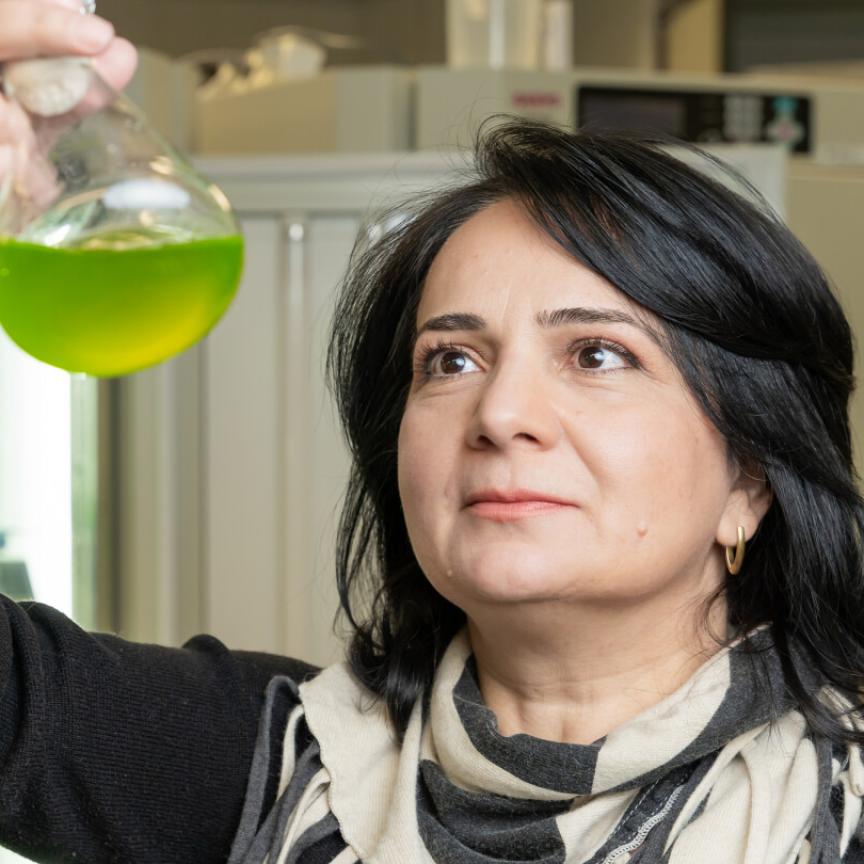Space telescopes give scientists unprecedented insight into how our universe works. The well-known James Hubble Telescope led to major breakthroughs in astronomy, and hopes are now high for its successor, the James Webb Space Telescope (JWST), launched on 25 December 2021.
On 3 February, NASA announced that the first particles of light from a star have made their way through the entire telescope into the JWST’s near infrared camera.
These NIR camera readings - confirming the telescope works - mean scientists on the ground can now start aligning the telescope’s 18 mirrors to focus on an area of interest for NASA scientists - a star similar in size and brightness to our Sun, the 84406. The alignment process will take around three months.
The James Webb Space Telescope - whose primary mirror spans 21.3-foot-wide (6.5 metres) - has met the physical limits of what can be carried into space with current technologies. To get it into orbit, the two wings of JWST’s primary mirror were folded to fit inside the nose cone of an Arianespace Ariane 5 rocket prior to launch. It then was unfolded in space.
While all eyes now lie on the JWST’s next discoveries, future space observation breakthroughs are running up against a physical limit: the size of the telescope. To explore deeper and further into space, telescopes must grow to epic sizes. Given the limited payload capacity of spacecraft, sending such behemoths into space presents a real challenge. But work is underway to make it possible to assemble the primary mirrors of telescopes in space, where the mirror’s weight - and the complexity of launching it from Earth - are not an issue.
One EU-funded project, ‘Prototype of an Ultra Large Structure Assembly Robot (PULSAR)’, aims to do just this. The 2-year project started in February 2019 and supported by a € 4 million investment from the EU’s Horizon 2020 programme aimed to create a fully autonomous robotic assembly system. Upon completion of the project in March 2021, Pulsar engineers have unveiled a fully autonomous robotic demonstrator, which could construct the primary mirror of a telescope from separate parts in orbit. The system, which includes components developed by CSEM, a Swiss research organisation, paves the way towards the assembly of giant telescopes directly in space – telescopes that would otherwise be too big to launch into orbit in a single piece. The autonomous system has the potential to construct other large space structures, such as orbiting solar panels or solar sails.
‘In the future, we will be able to assemble a 35-meter diameter mirror with many more tiles,’ says Julien Rouvinet, a senior engineer at CSEM. ‘But it doesn’t make much sense for us to build a demonstrator on this scale, as the weight of this structure would be a major problem on Earth – of course in orbit the weight of this structure would not be a problem.’
Each of the six hexagonal tiles supports a small mirror and is connected to the others to form a single, larger mirror. A solution to this problem currently undergoing research involves sending telescopes into space in separate components. These components could then be assembled by autonomous robots once the instrument is in orbit.
This approach has been examined under the EU-funded project PULSAR. The project’s goal is to develop the technological bricks needed to autonomously assemble large structures in space.
PULSAR is headed by the French firm Magellium and includes seven other European organisations, including CSEM. The project team has just unveiled three demonstrators, one of which is for a high-precision autonomous robotic system that would be used to assemble a telescope’s primary mirror. This demonstrator can build a 1:3 scale mirror (300 mm x 180 mm) consisting of six tiles weighing 11 kg each. In the demonstrator, each tile is covered with a transparent plate but under real-world conditions, they would be equipped with a mirror.
The demonstrator includes a robotic arm that connects six components together and operates them. CSEM custom-designed the six tiles, including two with tripods enabling them to adjust their positions with a precision of one micron (i.e., one-fiftieth the width of a human hair) and repeatability better than five microns.
The tripods can achieve such accuracy thanks to the use of 3D-printed flexible joints, a first in this kind of space application. ‘The 3D-printed joints prevent the system’s components from rubbing against each other and wearing out, eliminating the need for lubricant,’ says Rouvinet. ‘That means the system can operate for longer and deliver enhanced precision.’ The software used to control and calibrate the system was also developed by CSEM’s engineers.
With the completion of the demonstrators, the PULSAR project is ending but research in this area is just getting started. ‘Telescopes are not the only large structures that will one day need to be assembled in space,’ says Rouvinet. ‘And this robotic system could be used for other purposes as well, such as to repair satellites, refuel space stations, assemble solar panels or even build huge heat shields for missions to land on Mars.’
For now, all scientific eyes are on the James Webb Space Telescope, which has met the physical limits of what can be carried into space with current technologies. PULSAR, however, is not alone in its attempt to break this physical technological barrier. ‘NASA engineers are developing a folding telescope that could fit into the large-payload spacecraft that SpaceX intends to eventually launch,’ says CSEM project manager Antoine Ummel. ‘Research efforts will undoubtedly step up once we receive the first images from the James Webb.’


